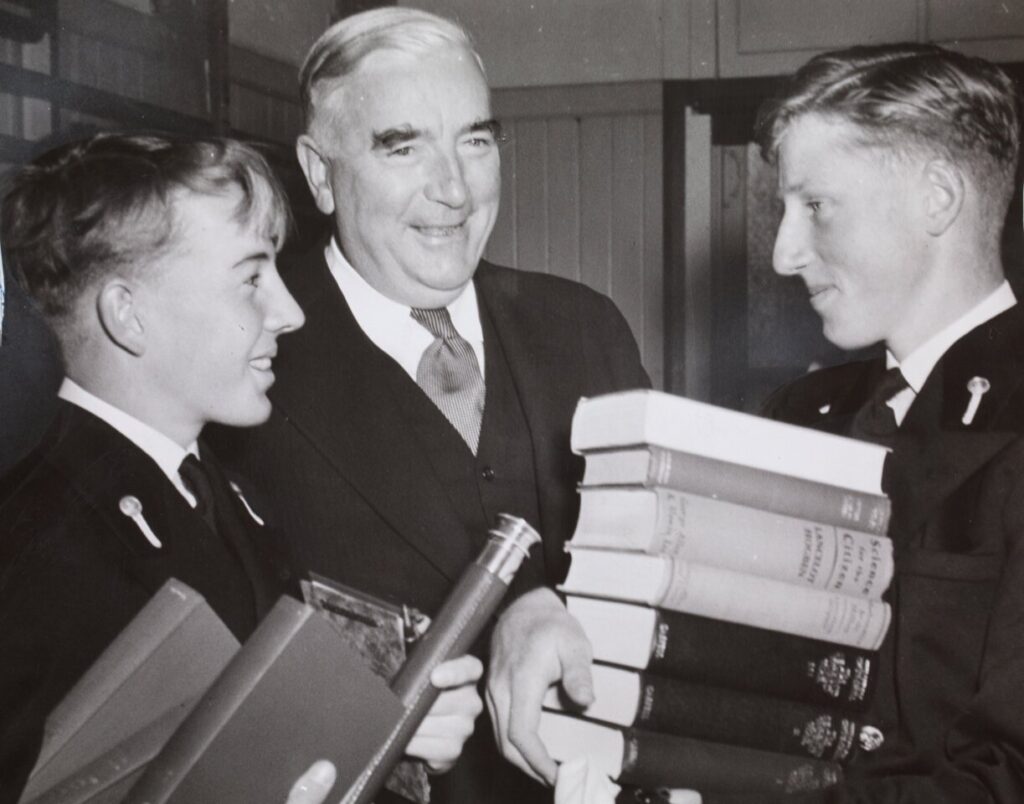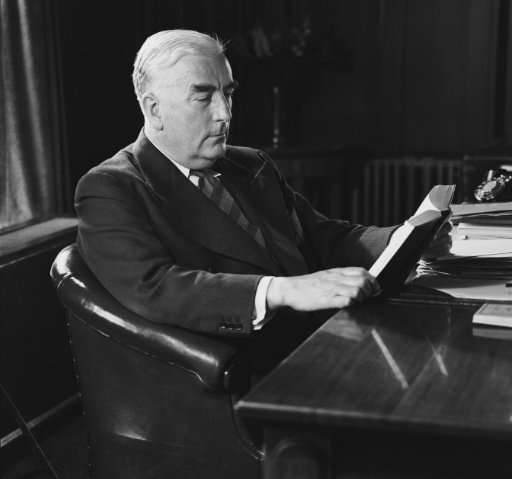On this day, 1 January 1951, the Menzies Government’s university scholarships program comes into effect. Given out on the basis of academic merit, these scholarships allowed thousands of Australians who would otherwise not have been able to afford university to receive a tertiary education. The scheme is very personal to Prime Minister Robert Menzies, as he himself had attended university thanks to a scholarship, and he maintained a profound belief in the importance of higher education to the health of a liberal democracy. As an advocate of the power of individual initiative and hard work, Menzies saw that by making Australia more meritocratic, he would also be making the nation more prosperous and successful.
Australian universities had existed since before Federation, and after the founding of the Commonwealth in 1901 they remained a responsibility reserved for State governments. In line with Australia’s egalitarian ethos, these governments frequently introduced merit-based scholarships for entry, but due to limited resources these tended to be very scarce in terms of the number of scholarships on offer. For example, when Menzies won his ‘exhibition’ scholarship to attend the University of Melbourne, there were just 25 available.
The Commonwealth Government became involved in subsidising university students due to the circumstances of the Second World War. Using the defence power in the Australian Constitution, in 1943 the Curtin Government introduced a financial assistance scheme aimed at boosting the number of people achieving qualifications in fields necessary to the war effort, such as medicine, dentistry, engineering, science, agriculture and veterinary science. This significantly increased the number of people attending university, and created an expectation that this level of education should be more accessible.
In 1944, 1946, and 1948 referendums were held to extend the powers of the Federal Government so that it could continue with a whole range of schemes that relied on the defence power, which would not be constitutionally viable once the War ended. Fears of centralisation and ‘socialism’ meant that the vast majority of these proposals were defeated, but the one that did succeed was the Social Services amendment, which among other things gave the Federal Government the power to financially assist university students.
On the basis of this power the Chifley Government began plans for a scholarship scheme that went far beyond what the initial wartime program had offered, however this never came to fruition before Labor lost power at the 1949 election. Menzies, who did have significant reservations about the extension of Commonwealth powers, nevertheless had the foresight to pick up the scheme and make it a core aspect of his Government’s vision for the nation.
The new proposal involved 3000 annual scholarships, ‘available for students resident in Australia, who were not under a bond (to work for an employer) and were enrolled in approved courses including all first degree courses, certain diploma courses, teachers college courses, certain diploma courses at technical colleges, certain other professional courses such as pharmacy and physiotherapy and combined university courses such as arts/diploma of education and arts/law.’
Scholarships covered compulsory fees without reference to a means test, with additional travel and living allowances for those who needed it, and these carried over for the minimum duration of the course. The maximum living allowance was £130 per annum if living at home and £195 if not living at home, at a time when the average male earned £333.9 per annum. There was some discrimination on the basis of age (with younger students being preferred) and marital status, though these were gradually lessened throughout the 1950s. Over the course of the years the number of scholarships were significantly increased, and specialised technical education scholarships were also introduced.
The importance of this scheme is difficult to overstate. By the time Menzies left office in 1966 it is estimated that three-quarters of students at universities and colleges had their fees paid by scholarships, bursaries, or cadetships – a whole generation of Australians, from leading visionaries to humbler workers, owed their education to Robert Menzies.
Further Reading:
Dale Daniels, ‘Student Income Support: a Chronology’, Parliamentary Library Research Paper, 2017.
Gwilym Croucher and James Waghorne, Australian Universities: A History of Common Cause (UNSW Press, 2020).
Troy Bramston, Robert Menzies: The Art of Politics (Scribe, 2019).
Sign up to our newsletter
Sign up for our monthly newsletter to hear the latest news and receive information about upcoming events.


